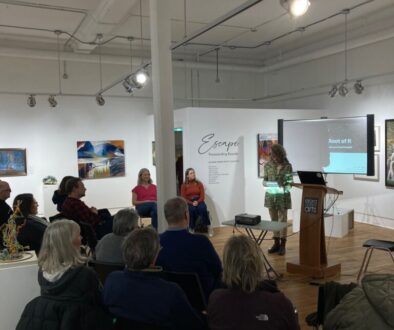An Interview with our Urban Forest Manager, Mat Alain
Neighbourwoods satdown with Mat
recently and posed some questions that we know readers
arewondering:
Does the Township use the
Inventory Data we’vecollected over the years and if so,
how?
Yes. Â We sure appreciate having
the data on so manyof our trees and use it in 3 ways:
- We haveestablished 7 community maintenance
pruning zones in CW, and tackled Zone 1first because that is where we had the
most inventory data. Knowing thestructural health of our trees helps
determine fair pricing for our pruning contractor. - Our
chiefmandate in planting is diversity to mitigate the risk of widespread
disease inone species. Because of Neighourwoods,we know that we have a
large number of Maple trees, so we can make informeddecisions about what to
plant to start to build a more diverse urban forest. - When
I amasked to look at a specific tree, the more historical data I have about a
tree,the better I can understand the overall health of the tree.Â
Speaking of planting, we are
seeing lots of newstreet trees – what’s being planted and how
many?
About 70% nativespecies like Oaks,
Hackberries and Serviceberries- which as small stature treesmake them ideal
under hydro lines. About 30% are non-native for 2 reasons;because there is a
limited supply of native stock and some are, frankly,hardier for some
sites- like the Japanese Zelkova (related to an Elm) andKatsura
trees.
We’ve planted about200 street trees in 2017 and
another 200 in 2018 and plant to put in the samethis
year.
I’d like to remind residents if they have an
irrigation bag around their tree, please fill it about once a week during hot
dry weather, to help the tree get
established.
What is the success rate of
street trees?
About 90% – and we count on
homeowners to do their part by watering, mulching and pruning their baby
trees correctly.
I know the township is also
planting in naturalizedareas – can you
elaborate?
I’ve organized somecommunity
planting days with help from the corporate sector which sends volunteersand
provides some of the funding needed to purchase plant
material.
In 2018, Â 90 trees and shrubs were planted
at the FergusSportsplex with the Rotary Club of Fergus Elora and Green
Legacy
- 290 trees and shrubs along the Trestle
Bridge Trail near Southridge park with support from Vitner’s Cellar,
CanSafe – Safety Zone Fergus, and Friends of the
Grand. - 141 trees and shrubs beside the Cottontail Trail
with help from Union Gas, Dillon Consulting and Green
Legacy.
And this spring, weplanted 276 trees
and shrubs at Elora Meadows Park, Harper Crescent Park andthe Gzowski Street
trailhead of the Elora Cataract trail with support from RBCand Green
Legacy.
The Ash trees seem to be coming down
faster now- is that true?
Yes. We are
about halfway through the 12 year Emerald Ash Borer infestation and ash
mortality cycle. Â We are seeing larger numbers of ash trees declining
this year than previous years and expect even more next year. We’ve
lost about 1,500 so far and 50 more are slated for removal next month. Our
goal is to re-plant at a ratio of 2:1 but because it is so busy now, the rate
is closer to 1:1, but we’ll make up for the trees down the road.
What
about those drastically pruned Ash treeson Chalmers Street in
Elora?
They will be comingdown this
year.
For homeowners who would like a new
streettree, what should they do?
Call
me. We’ll check out the site for overhead wiresand ensure there is
adequate soil volume, we’ll put them on the list and get tothem as fast as
possible.
And we have to ask the age-old
question:Â is a public tree bylaw in our
future?
There is staff andcouncil support
for it – it’s coming along. For one thing, it will be helpful for
giving enforcement teeth to treeprotection zone requirements outlined in our
Public Forest Policy.
Thank you
Mat.
People are welcome tocall me at
519-846-9691 x 218 or email me at malain@centrewellington.ca.


